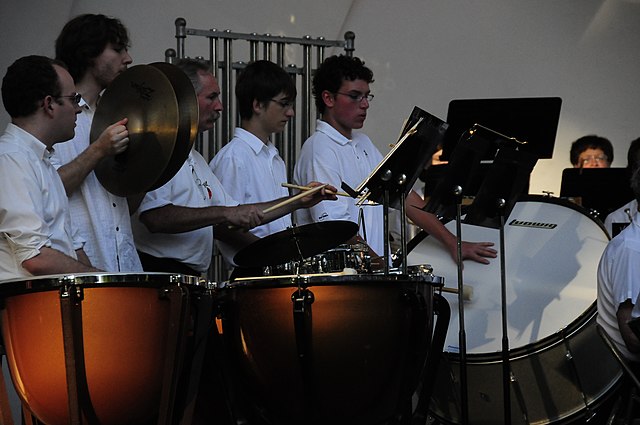Unpitched percussion instrument
An unpitched percussion instrument is a percussion instrument played in such a way as to produce sounds of indeterminate pitch, or an instrument normally played in this fashion.
A pair of timbales, two cowbells, a jam block and a cymbal all in use as unpitched percussion
Andrea Neumann's prepared piano, Goethe-Institut, Boston, 2010, showing a dinner knife, a dinner fork, a piece of felt and a piece of cardboard interfering with the normal movement of the strings.
The tabla, left, is tuned to the tonic, dominant or subdominant of the soloist's key and thus complements the melody. Its drum head is reinforced at the centre to reduce inharmonic overtones.
The cowbell is most often used as unpitched percussion, but here is a pitched set
A percussion instrument is a musical instrument that is sounded by being struck or scraped by a beater including attached or enclosed beaters or rattles struck, scraped or rubbed by hand or struck against another similar instrument. Excluding zoomusicological instruments and the human voice, the percussion family is believed to include the oldest musical instruments. In spite of being a very common term to designate instruments, and to relate them to their players, the percussionists, percussion is not a systematic classificatory category of instruments, as described by the scientific field of organology. It is shown below that percussion instruments may belong to the organological classes of idiophone, membranophone, aerophone and chordophone.
Orchestral percussion section with timpani, unpitched auxiliary percussion and pitched tubular bells
Djembé and balafon played by Susu people of Guinea
Concussion idiophones (claves), and struck drums (conga drum)
Modern Japanese taiko percussion ensemble








